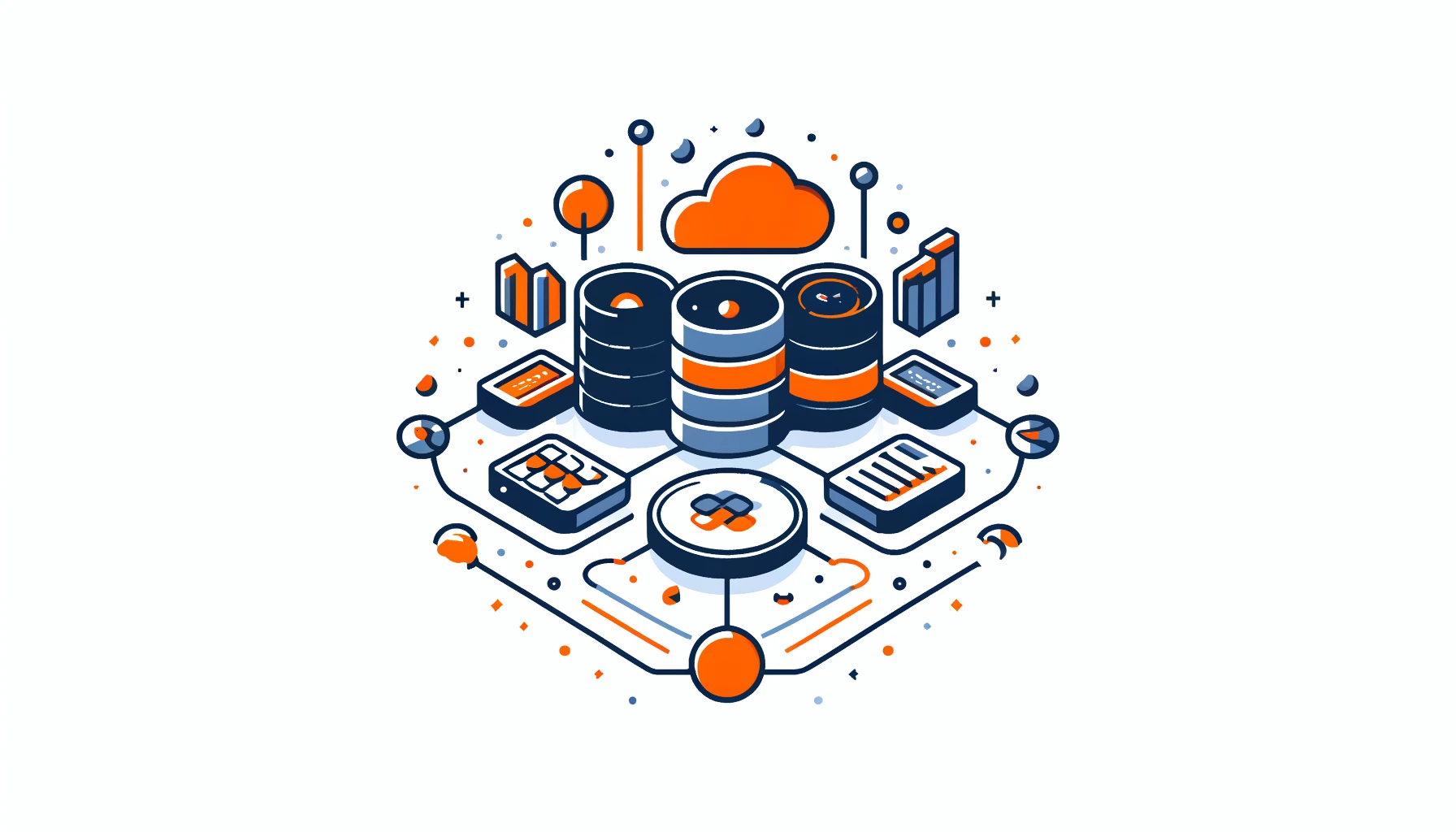
Redshift and RDS

Introduction
In the era of big data, cloud databases have become increasingly popular. They offer scalability, flexibility, and cost-effectiveness. Two of the most widely used cloud databases are Amazon Redshift and RDS (Relational Database Service).
This article will explain the basics of Redshift and RDS. It will focus on how they differ in data querying, authentication, and security settings. We will teach you how to search for data using CLI and Python. We will also explain the importance of connection certificates for secure remote access.
What is Amazon Redshift?
Amazon Redshift is a fully managed, petabyte-scale data warehouse service. It is designed for high-performance analysis of structured and semi-structured data.
Redshift uses a columnar storage format and advanced compression techniques to achieve fast query performance. It is ideal for analytical workloads, such as business intelligence, data mining, and predictive analytics.
What is Amazon RDS?
Amazon RDS is a managed relational database service that supports multiple database engines. These include MySQL, PostgreSQL, Oracle, SQL Server, and MariaDB. RDS simplifies database administration tasks, such as provisioning, scaling, and backup. It provides high availability and durability through features like automatic failover and multi-AZ deployments.
Differences in Data Querying
Redshift and RDS differ in their approach to data querying. Redshift, a data warehousing service, utilizes SQL (Structured Query Language) for querying data. It has some features unique to Redshift, like window functions, JSON functions, and COPY commands for data loading.
Window functions help analyze data, while JSON functions let users work with JSON data in the database. Users use the COPY command to efficiently load large amounts of data into Redshift from external sources. These extensions enhance the functionality of Redshift and make it a powerful tool for analyzing and managing large datasets.
RDS on the other hand supports the standard SQL syntax of the specific database engine being used. For example, if you are using PostgreSQL on RDS, you can use PostgreSQL-specific SQL commands and extensions.
Here’s an example of a simple SELECT query in Redshift:
SELECT customer_id, SUM(total_amount) as total_spent FROM orders WHERE order_date BETWEEN '2023-01-01' AND '2023-12-31' GROUP BY customer_id ORDER BY total_spent DESC;
And a similar query in RDS (assuming a PostgreSQL database) will work fine.
Authentication and Security
Both Redshift and RDS offer robust authentication and security features. Redshift uses AWS Identity and Access Management (IAM) for authentication and access control. You can create IAM users and roles and grant them specific permissions to access Redshift resources.
RDS, on the other hand, uses the native authentication mechanisms of the specific database engine. For example, in PostgreSQL on RDS, you can create database users and grant them permissions using SQL commands.
To secure the connection to Redshift or RDS, you need to use SSL/TLS encryption. This involves using a connection certificate to establish a secure channel between your application and the database. The connection certificate can be downloaded from the AWS Management Console.
Querying Data with CLI and Python
You can query data in Redshift and RDS using various tools and programming languages. Two common methods are using the AWS Command Line Interface (CLI) and Python.
To query data using the AWS CLI, you first need to install and configure the CLI on your machine. Then, you can use the aws redshift or aws rds commands to interact with your databases.
Here’s an example of querying data in Redshift using the AWS CLI:
aws redshift execute-statement --cluster-identifier my-cluster \ --database my-database --sql "SELECT * FROM customers LIMIT 10"
To query data using Python, you need to install the appropriate database driver. For Redshift, you can use the psycopg2 or sqlalchemy libraries. For RDS, the driver depends on the specific database engine. As an example, for PostgreSQL on RDS, you can use psycopg2.
Here’s an example of querying data in RDS (PostgreSQL) using Python and psycopg2:
import psycopg2
conn = psycopg2.connect(
host="my-rds-instance.123456789012.us-west-2.rds.amazonaws.com",
port=5432,
database="my-database",
user="my-user",
password="my-password"
)
cur = conn.cursor()
cur.execute("SELECT * FROM customers LIMIT 10")
results = cur.fetchall()
for row in results:
print(row)
cur.close()
conn.close()Data In-Transit Encryption
In the case mentioned above, the connection may be established without SSL/TLS encryption. This is due to the default connect() behavior. This means that the data transferred between your application and the database may be sent in plain text, making it vulnerable to interception and unauthorized access. While this works, it is strongly discouraged for production environments or when dealing with sensitive data.
Omitting the SSL certificate and establishing an unencrypted connection has several risks:
- Data privacy: Sensitive information, such as user credentials, personally identifiable information (PII), or confidential business data, can be exposed if the connection is intercepted by unauthorized parties.
- Compliance violations: Many industry standards and regulations, such as GDPR, HIPAA, and PCI DSS, require the use of encryption to protect data in transit. Failing to use SSL/TLS encryption may result in non-compliance and potential legal consequences.
- Vulnerability to attacks: Unencrypted connections are susceptible to various network-based attacks, such as man-in-the-middle (MITM) attacks, where an attacker can intercept and manipulate the data being transmitted.
To mitigate these risks, it is highly recommended to always use SSL/TLS encryption when connecting to Redshift, RDS, or any other database service. Make sure to include the sslmode and sslcert parameters in your psycopg2.connect() call and provide the path to the downloaded SSL certificate using sslcert parameter.
import psycopg2 conn = psycopg2.connect( host="my-cluster.123456789012.us-west-2.redshift.amazonaws.com", port=5439, database="my-database", user="my-user", password="my-password", sslmode="verify-full", sslcert="/path/to/certificate.pem" )
Certificate Download
When you create a new Redshift cluster or RDS instance, AWS generates a unique SSL/TLS certificate for that resource. You can download the certificate from the AWS Management Console or retrieve it programmatically using the AWS CLI or SDKs.
To download the certificate for a Redshift cluster:
- Open the Amazon Redshift console.
- Select your cluster.
- In the “Cluster Configuration” section, click on the “SSL Certificates” tab.
- Click on “Download SSL Certificate” to download the certificate file.
To download the certificate for an RDS instance:
- Open the Amazon RDS console.
- Select your RDS instance.
- In the “Connectivity & Security” section, click on the “SSL Certificate” field.
- Click on “Download” to download the certificate file.
By including the SSL certificate and enabling SSL/TLS encryption, you ensure that the communication between your application and the database is secure, protecting sensitive data and maintaining compliance with security best practices.
Examples and Preliminary Setup
To demonstrate the usage of Redshift and RDS, let’s consider a simple example. Suppose we have an e-commerce application that stores customer and order data. We want to analyze the total spent by each customer in the last year.
Before running the queries mentioned earlier, we need to set up the necessary databases, tables, and users.
For Redshift:
- Create a Redshift cluster and database using the AWS Management Console or CLI.
- Create a table named orders with columns order_id, customer_id, total_amount, and order_date.
- Load sample data into the orders table using the Redshift COPY command.
- Create an IAM user with permissions to access the Redshift cluster and database.
For RDS (PostgreSQL):
- Create an RDS instance and database using the AWS Management Console or CLI.
- Create a table named orders with columns order_id, customer_id, total_amount, and order_date.
- Insert sample data into the orders table using SQL INSERT statements.
- Finally, create a database user with permissions to access the orders table.
After running the queries, you’ll get a result set showing the total spent by each customer in descending order. You can use this information for customer segmentation, targeted marketing, or identifying high-value customers.
Summary and Conclusion
In this article, we explored the basics of Amazon Redshift and Amazon RDS, two popular cloud databases. We discussed their differences in cloud data querying, authentication, and security settings. We showed how to search for data using CLI and Python, and talked about the drivers for each database.
Redshift and RDS offer powerful capabilities for storing and analyzing data in the cloud. Redshift is optimized for high-performance analytics, while RDS provides managed relational databases with support for multiple engines.
When working with cloud databases, security is paramount. Using connection certificates and SSL/TLS encryption ensures secure remote access to your databases.
Learn about Redshift and RDS to choose the best database for your needs. Amazon’s cloud databases provide scalable and reliable solutions. These solutions are ideal for building a data warehouse or transactional application. The databases have an RDS backend that supports business intelligence.
DataSunrise: Comprehensive Database Security
DataSunrise provides easy-to-use tools for organizations to improve security, masking, and compliance of their Redshift and RDS databases. It provides a comprehensive solution for database security, including features like data discovery, classification, access control, and auditing.
Visit our DataSunrise team for a demo. Learn how our products can protect your cloud databases and help you meet regulations like GDPR, HIPAA, and PCI DSS.
